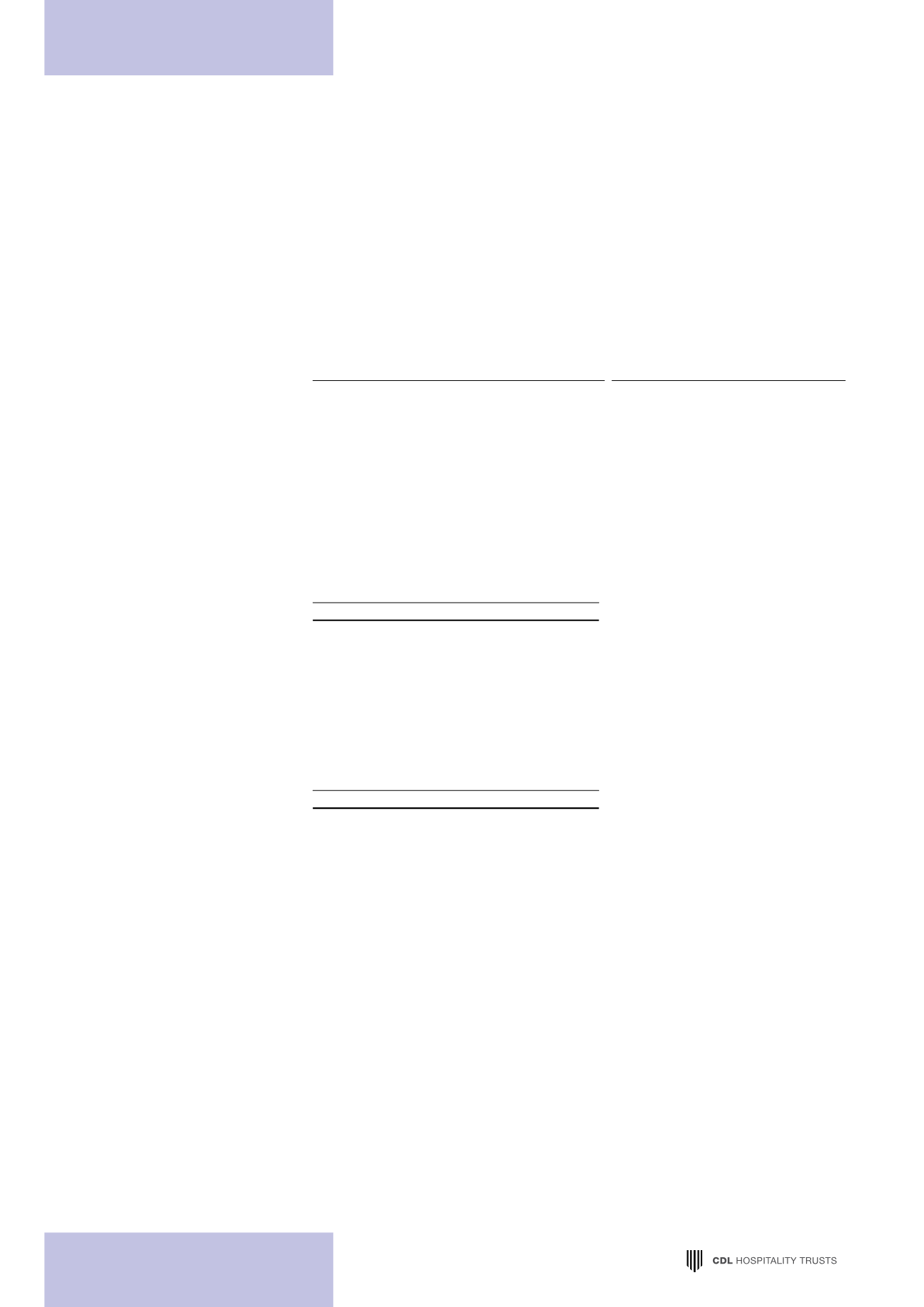
182
27 FINANCIAL INSTRUMENTS (CONT’D)
Fair values (cont’d)
Accounting classifications and fair values (cont’d)
Carrying amount
Fair value
Fair value -
Other
Note Loans and hedging financial
receivables instruments liabilities Total
Level 1 Level 2 Level 3 Total
$’000
$’000
$’000 $’000 $’000 $’000 $’000 $’000
Stapled Group
2014
Trade and other
receivables^
9
17,512
–
– 17,512
Cash and cash
equivalents
10
76,447
–
– 76,447
Rental deposits
126
–
–
126
–
–
123
123
94,085
–
– 94,085
Unsecured
bank loans
12
–
– (571,488) (571,488)
– (570,061)
– (570,061)
Unsecured medium
term notes
12
–
– (203,444) (203,444)
– (203,121)
– (203,121)
Financial derivatives
liabilities
13
–
(581)
–
(581)
–
(581)
–
(581)
Trade and other
payables
15
–
– (39,651) (39,651)
Rental deposits
–
– (7,065)
(7,065)
–
– (7,984)
(7,984)
–
(581) (821,648) (822,229)
^ Excluding prepayments and deferred capital expenditure
Measurement of fair values
Valuation techniques and significant unobservable inputs
The following show the valuation techniques used in measuring Level 2 and Level 3 fair values, as well as the significant
unobservable inputs used.
(i)
Derivatives
The fair values of interest rate swaps (Level 2 fair values) are based on banks’ quotes. These quotes are tested for
reasonableness by discounting estimated future cash flows based on the terms and maturity of each contract and
using market interest rates for a similar instrument at the measurement date. Fair values reflect the credit risk of
the instrument and include adjustments to take into account the credit risk of the Stapled Group and counterparty
where appropriate.
NOTES TO THE FINANCIAL STATEMENTS


